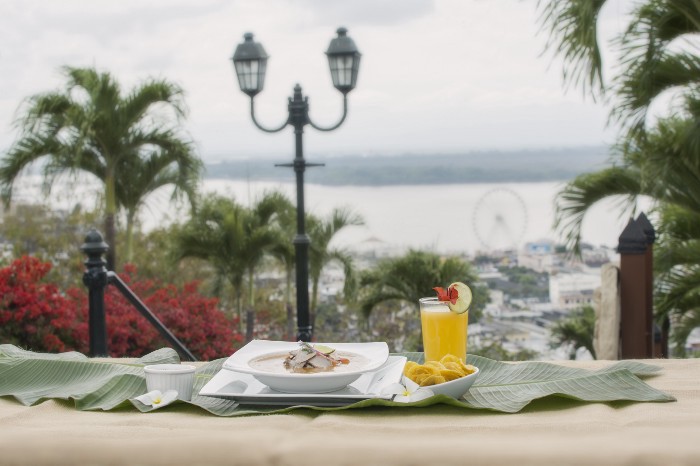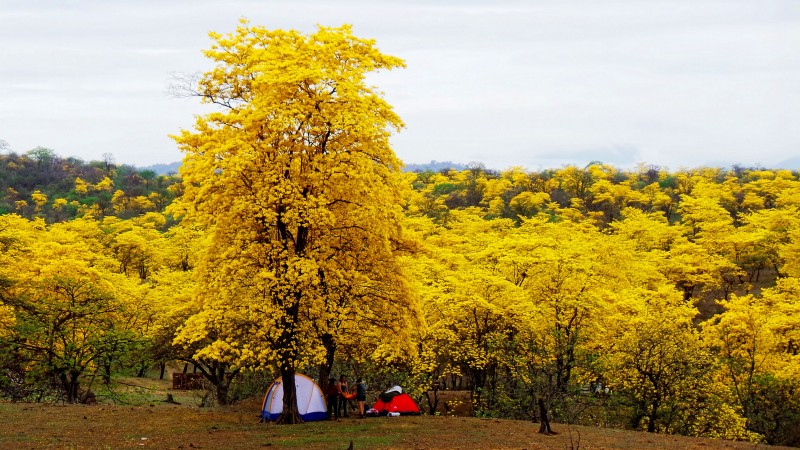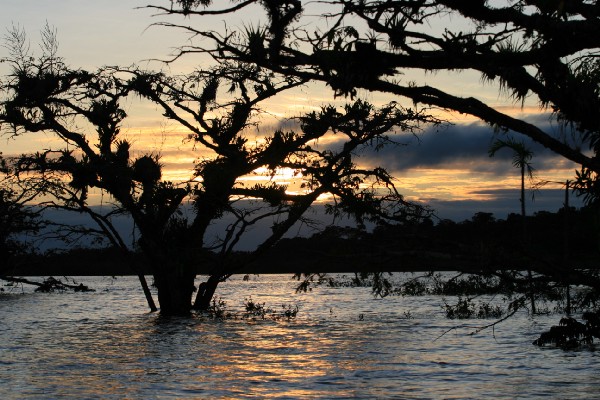Our proposal goes beyond the culinary world. It is about recovering the traditions, aromas and gastronomic identity of Guayaquil, the “Pearl of the Pacific”, which welcomes you with open arms and excellent culinary options. Choosing only five dishes is a difficult task because the city has a wide variety of meals and combinations. But here we go!
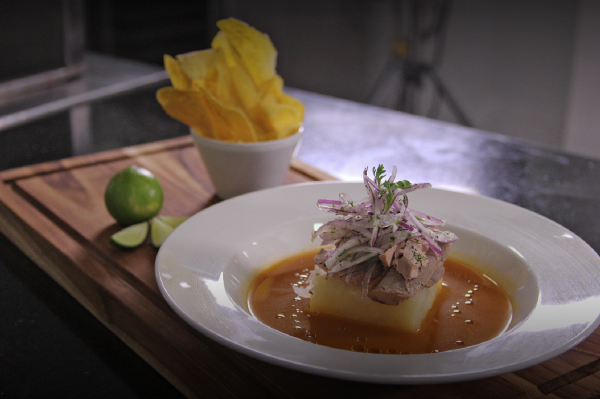
“Encebollado”:
Among everyone’s favorites, the great “encebollado”. It’s a meal prepared with albacore, cassava, tomato, red onion and some other ingredients. It has many recipes and like almost everything in the kitchen, each cook and chef has its own personal touch.
The first vestiges of the “encebollado” appearance in America goes back to the 18th century. According to historians, this dish has its origin in 1940 when it was prepared as an extra spicy chicken. They say it is a purely Guayaquil dish, an explosion of aromas, flavors and memories that’s often served with a portion of fried plantain, bread or rice.
“Guatita”:
As I said before, there are many delicious representative dishes in Guayaquil. Now it’s the turn for one of the main dishes: the “guatita”. A meal from the Ecuadorian coastal region which is consumed by workers, executives, taxi drivers, men and women; pretty much everyone in Guayaquil has tried it at least once.
Made out of cow’s stomach and sliced potatoes seasoned with tomatoes, onion, pepper, garlic, herbs and the special touch of peanut. Although its preparation is simple it takes patience and time to cook it. According to history, it was introduced in the country by Europeans in 1920.
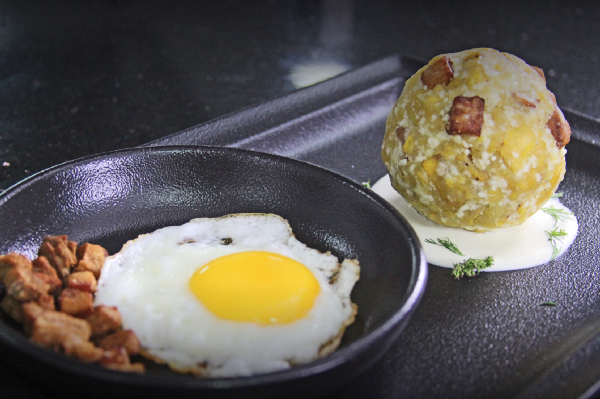
“Bolón”:
If you are looking for a traditional meal, you can’t miss out the “bolón” (a ball of fried mashed green plantain that can be made out of cheese, fried pork or a mixture of both). The origin of this dish is still uncertain; however, it is a traditional snack of the “montuvio” people, the coastal region inhabitants. It is also known that it emerged on the Ecuadorian Coast long, long ago.
Cheese “bolón” is the most common variation but some people prefer a particular touch of fried pork rinds to get that extra caloric energy.
Historians say that before the wheat arrived to the Americas in 1852, the coastal regions used to prepare dishes made out of green plantain. So, from that time until today, the consumption of this exquisite dish has been strengthened and spread. Usually served for breakfast along with a strong and steaming cup of filtered coffee.
“Morocho”:
A special drink for the rare but still cold nights of Guayaquil. Its unique aroma comes from cinnamon, raw sugar, milk and other condiments that flavor the “morocho”, a type of corn that gives name to the beverage. The “morocho” dates from the pre-Hispanic era although its preparation is not the same one enjoyed in the old days. Each ingredient has changed over time because the taste of the Spaniards, after the conquer, greatly influenced its preparation.
Mostly prepared in the Andean region, about thirty years ago it became popular in the houses and tables of Guayaquil. The milky drink is found in several restaurants, where is often served with a toast or a piece of bread.

“Pork sandwich”:
Guayaquil’s cuisine is characterized by very tasty and yet simple dishes. Some of them are light snacks like the famous pork sandwich. Usually eaten at noon or at the end of the workday, it’s a kind of sandwich prepared with bread, red onion and a crispy and delicate piece of pork. Some may add a touch of chili or some hot sauce, why not?
Many businesses that nowadays sell this delight are well known in Guayaquil, some of them with more than 50 years of tradition. It is believed that the first kiosk selling pork sandwich appeared in 1943.
There are multiple stories in Guayaquil and each historic and touristic site has its own. So this is an invitation to get to know those stories by it’s flavor. Come to Guayaquil and take a gastronomic trip through its gastronomic identity. Do you dare to meet the flavors of the Pearl that shines in the Pacific?
Más contenido similar

5 essential dishes to revive the “guayaco” flavor
Our proposal goes beyond the culinary world. It is about recovering the traditions, aromas

5 Ecuadorian forests that generate oxygen for the planet
Nature amazes us with its subtle presence in each of its corners. Ecuador from
